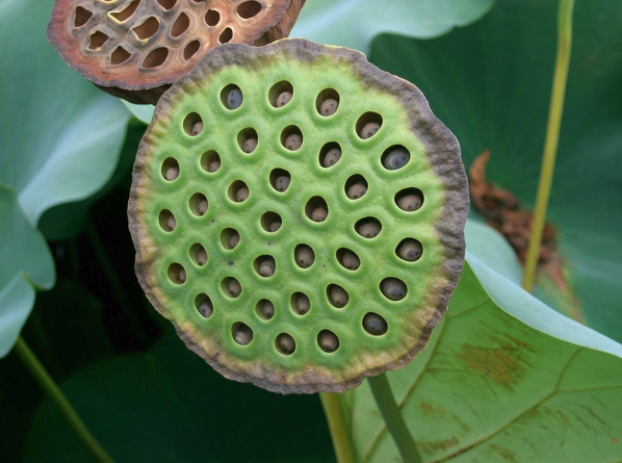Cutting open a pomegranate, I find myself digging out the deliciously juicy red seeds from the rind. However, at second glance, I’m horrified at the sight of the strangely shaped cavities in the rind.
Trypophobia, the fear of holes, is something that many people have heard of. Whether it be a pomegranate rind, a wasps nest or the lotus root that my mom cooks, the most ordinary items spotted with tiny holes have all triggered my case of trypophobia.
It may seem strange, as holes are such a mundane and harmless thing, but trust me, if you search up “trypophobia” you’ll encounter the same unsettling and disgusted feeling.
I still remember my first encounter with trypophobia. One day in elementary school, I saw a dried wasp nest on the ground in my backyard. Even though there was literally nothing inside it, my stomach turned, my palms sweated and the image of that wasp's nest lingered in my head for quite some time.
Another time, I was cooking pancakes, when the batter started bubbling, and it created a bunch of small holes. Even though pancake batter is much more harmless than a wasp’s nest, I had that same uneasy feeling. I immediately flipped the pancake over, and I didn’t have pancakes for a while after that.
I was curious as to what causes this fear and why people have it. I’ve never had a traumatic experience with holes, so I don’t know what the source of my fear is.
Through research, I found that trypophobia is a response developed through evolution to avoid disease. According to Verywell Mind, diseased skin, parasites and other illnesses can be characterized by such holes, and therefore, we have developed through evolution a natural aversion to such patterns of holes.
Since I probably won’t seek treatment and it’s probably pretty harmless, trypophobia will likely be something that I will have to deal with for the rest of my life, and objects that had previously triggered it will be hard to forget.
























